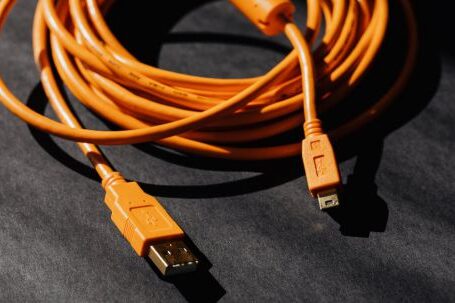Streaming devices have become a popular choice for families to access a wide range of entertainment content. From movies and TV shows to music and games, these devices offer a convenient way to enjoy digital media. However, with this convenience comes the need for parental control options to ensure that children are only exposed to age-appropriate content. In this article, we will explore the various parental control options available for streaming devices.
Content Filtering
One of the most basic parental control options for streaming devices is content filtering. This feature allows parents to block or restrict access to certain types of content based on age ratings or specific categories. For example, parents can choose to block R-rated movies or restrict access to adult-oriented TV shows. Content filtering can be set up through the device’s settings or through third-party apps or software.
Time Limits
Another useful parental control option is the ability to set time limits on streaming device usage. This feature allows parents to restrict the amount of time their children can spend on streaming devices each day. By setting time limits, parents can ensure that their children are not spending excessive amounts of time in front of screens and are engaging in other activities such as homework or physical play.
Password Protection
Password protection is a crucial parental control option that helps prevent unauthorized access to streaming devices. Parents can set up a password that needs to be entered before anyone can access the device or make changes to its settings. This ensures that children cannot bypass parental controls or access inappropriate content by themselves.
Content Ratings and Reviews
Most streaming platforms provide content ratings and reviews for movies, TV shows, and other media. Parents can use these ratings and reviews as a guide to determine whether a particular piece of content is suitable for their children. By checking the ratings and reading reviews, parents can make informed decisions about what their children can watch or listen to on streaming devices.
Block Specific Channels or Apps
In addition to content filtering, parents can also block specific channels or apps on streaming devices. This allows them to have even more control over the types of content their children can access. For example, parents can block certain streaming apps that are known for containing inappropriate or violent content. Blocking specific channels or apps can be done through the device’s settings or through parental control apps.
Remote Monitoring
Some streaming devices offer remote monitoring features that allow parents to keep track of their children’s streaming activities. This feature enables parents to view the history of what their children have watched or listened to, giving them insight into their viewing habits. Remote monitoring can be particularly useful for parents who want to ensure that their children are not accessing inappropriate content when they are not around.
In conclusion, streaming devices offer a wealth of entertainment options for families, but it is essential for parents to have control over the content their children can access. With parental control options such as content filtering, time limits, password protection, content ratings and reviews, blocking specific channels or apps, and remote monitoring, parents can ensure that their children are only exposed to age-appropriate content on streaming devices. By utilizing these options, parents can create a safe and suitable entertainment environment for their children.




